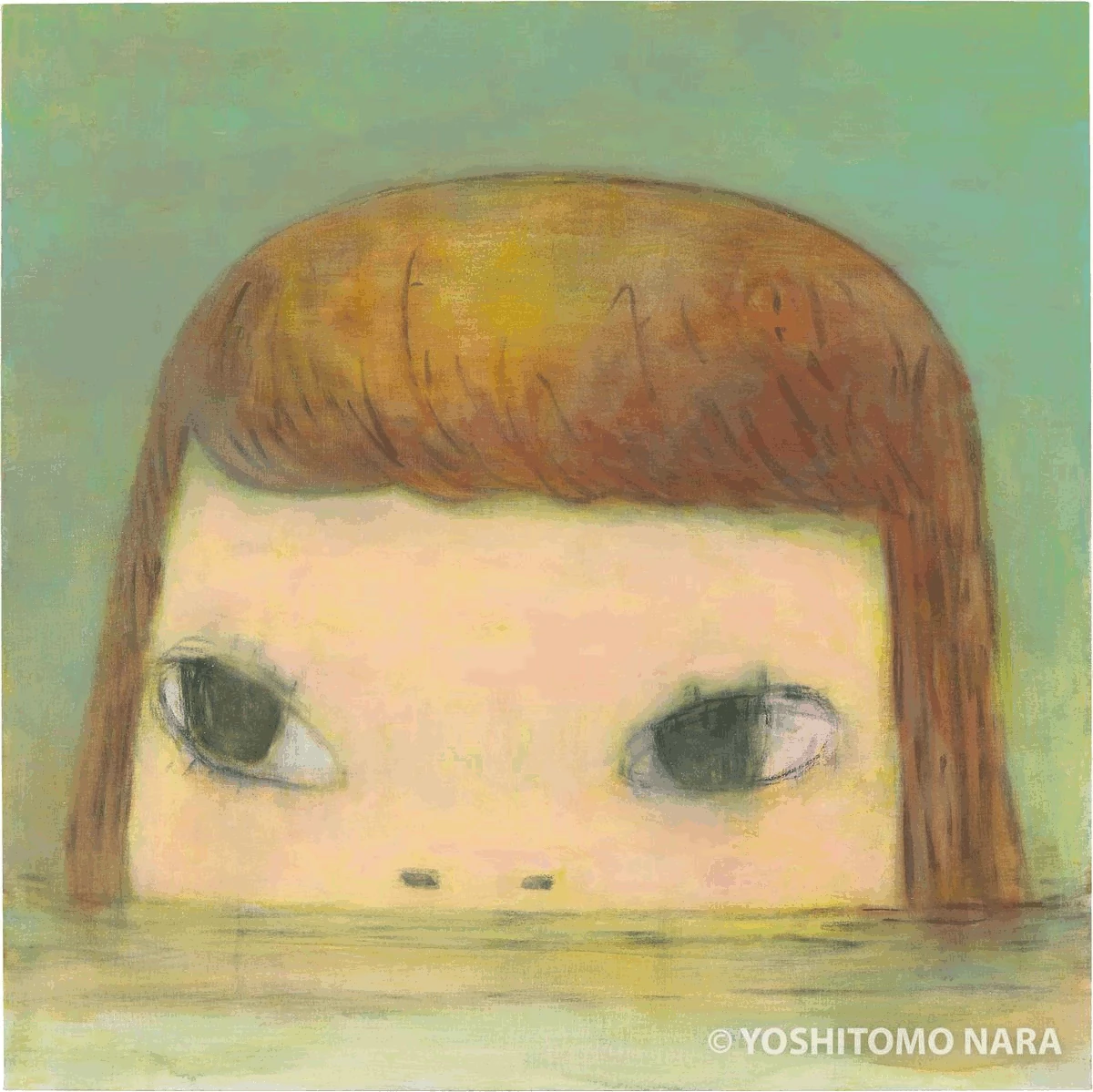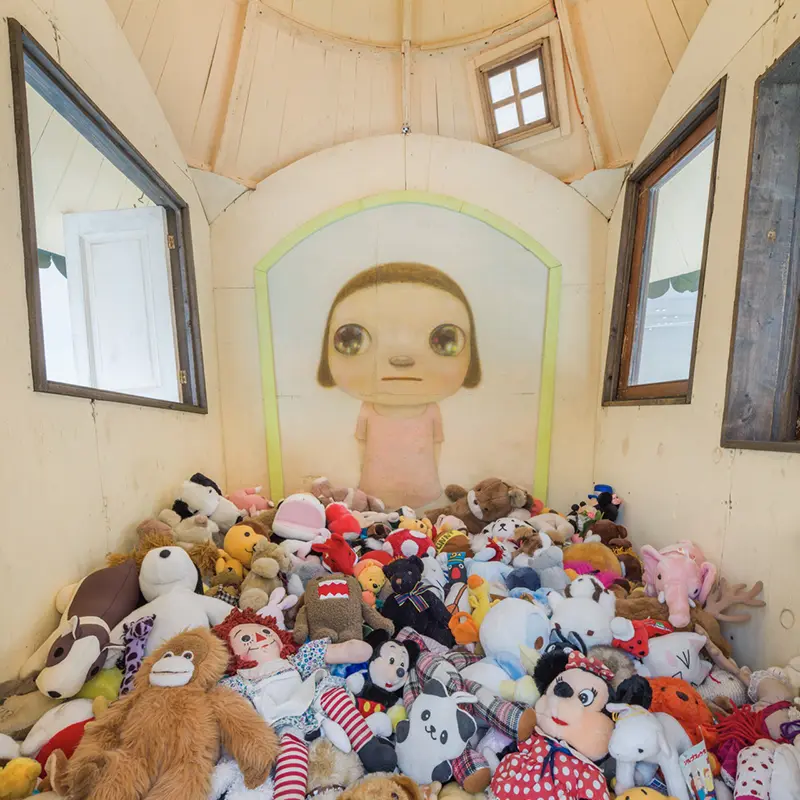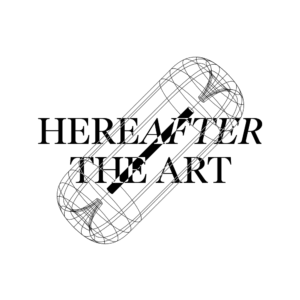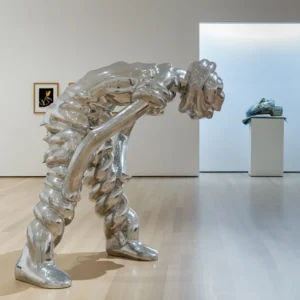One of the most well-known Japanese contemporary artists, Yoshitomo Nara is renowned not merely for his auction records but also for his unmatched proficiency to use his art to explore the universal emotion of angst cocooned within innocence.
Nara’s works typically feature children who are seemingly the embodiment of Kawaii, the Japanese popular culture phrase for appearing cute. However, upon further observation, his artworks reveal knives, crucifixes, and other subversive elements carried by the figures, causing them to lean more towards Kowai, another popular culture phrase meaning scary.
Nara combines both Kawaii and Kowai. He does this by employing the superflat movement, pioneered by Takashi Murakami, who fuses fine art with two-dimensional graphic design. This method reflects Nara’s emotionally intense yet visually simple style. By using punk music inspirations and advocating for resistance and rebellion, his art seeks to defy the stereotypes of Japanese culture. For a different look on pop art influences, see Julian Opie, whose work contrasts with Nara’s approach through its distinct style and presentation.
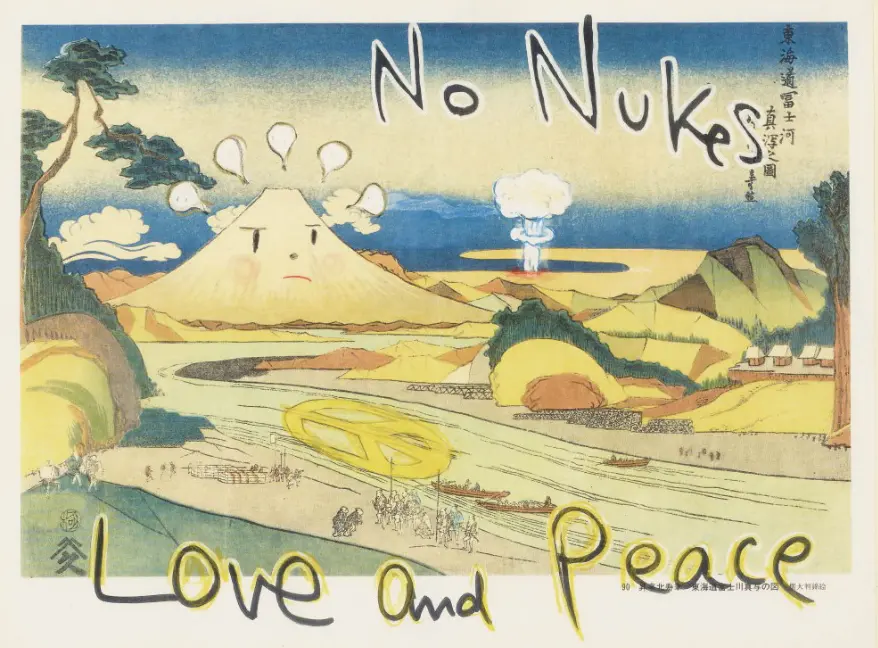
Artistic Journey and Sources of Inspiration
Yoshitomo Nara was born in 1959 in Hirosaki, Japan. He was raised in a lonely childhood and sought comfort in music and animals. His formative years were spent studying at the Kunstakademie Düsseldorf in Germany from 1988 to 1993.
In Germany, Nara became acquainted to punk rock and Neo-Expressionism, which greatly influenced his distinct style. He was forced to rummage through the recesses of his psyche and consider his identity during the period of seclusion that followed his relocation.
Following a six-year training in Germany under the tutelage of A.R. Penck, a Neo-Expressionist painter, Nara produced his famous sulky-figures, which are a direct reflection of his feelings of estrangement in Germany. Beneath their ostensibly innocent exterior, the sculptures exhibit a punk mentality that questions and rebels while retaining a certain kind of innocence that is exclusive to children.
His exposure to the post-World War II Japan in the Aomori Prefecture and Western culture helped him achieve the unusual fusion of terror and innocence in his artwork. He eventually returned to his Japanese roots, which led to a reflection of such a reconnection to his art. He used woodblock prints from the Edo era and traditional Japanese theatrical masks to create a synthesis.
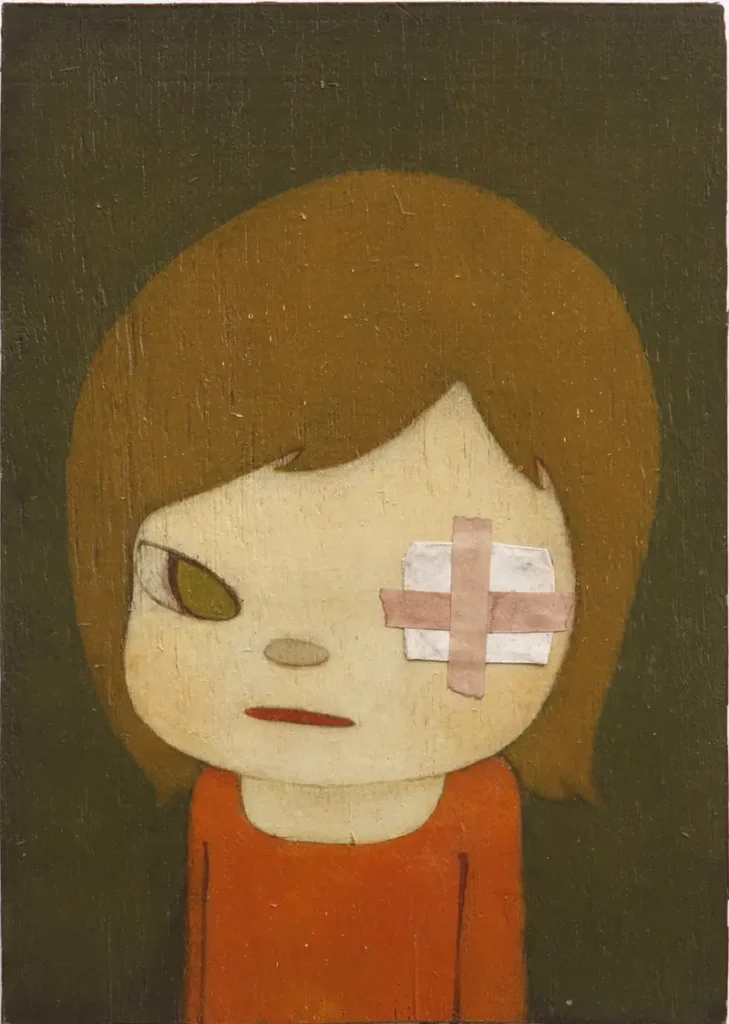
Signature Style and Method
Nara’s signature style may be characterized as scribbled cartoonish paintings with dogs and lonely adolescents on white backgrounds that convey an overwhelming feeling of isolation and unease.
Through layers of varying colors, his works of art establish a dynamic interaction between subjects and backgrounds, giving the impression of a transient existence outside of time. His dedication to the accessibility of the audience’s emotion is best understood by his portraits, which capture the artist’s realistic, introspective thoughts; his drawing works, which convey unfiltered emotions on everyday items; and his three-dimensional works, which give everyday items new lives.
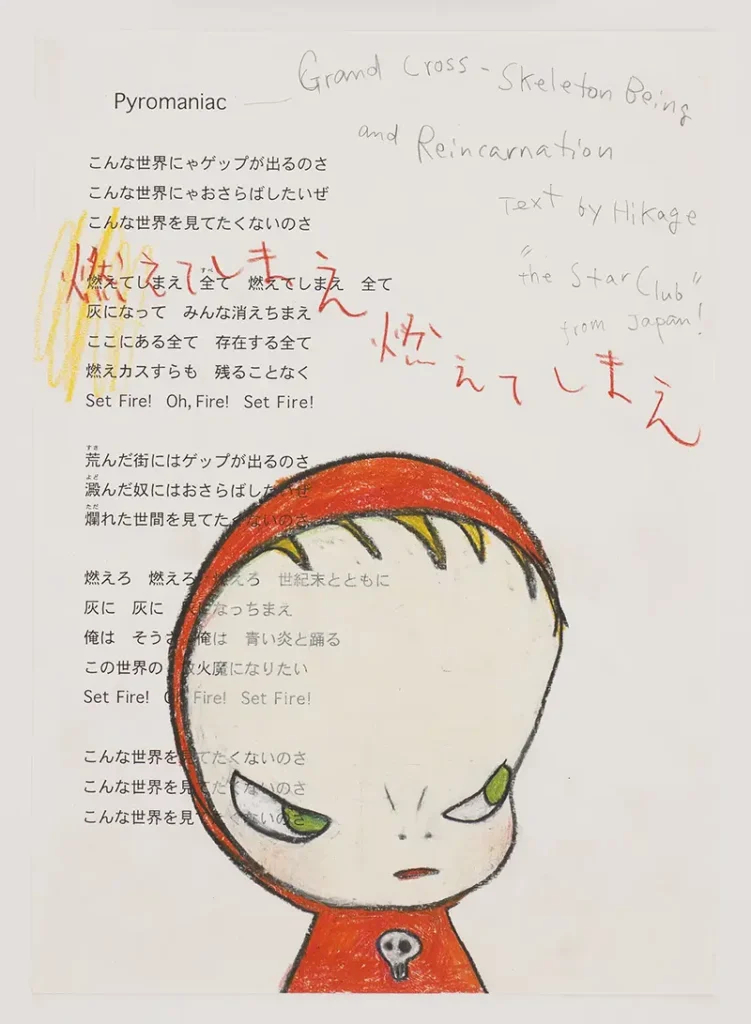
Rise to Fame and Auction Performance
In the 2000s, Nara’s stature as a global artist flourished. His pieces were shown all over the world, which brought him success at auctions.
His popularity was significantly boosted by his collaboration with gallery owner Tomio Koyama, who helped him gain recognition abroad and collaborate with other well-known artists such as Takashi Murakami. When Sotheby’s sold his “Knife Behind Back” for an astounding $25 million in 2019, Nara’s reputation as one of the most sought-after artists in Asia was cemented.
The most expensive piece overall in a Phillips evening sale in Hong Kong and the second-highest auction price for the artist was “Missing in Action” (2000), which brought in $15.9 million in June 2021. The artist’s quick ascent in the art market has also been aided by works like “Not Everything But / Green House” (2009) and “Berlin Barrack, Room 1” (2007), which have attracted a lot of interest and high prices.
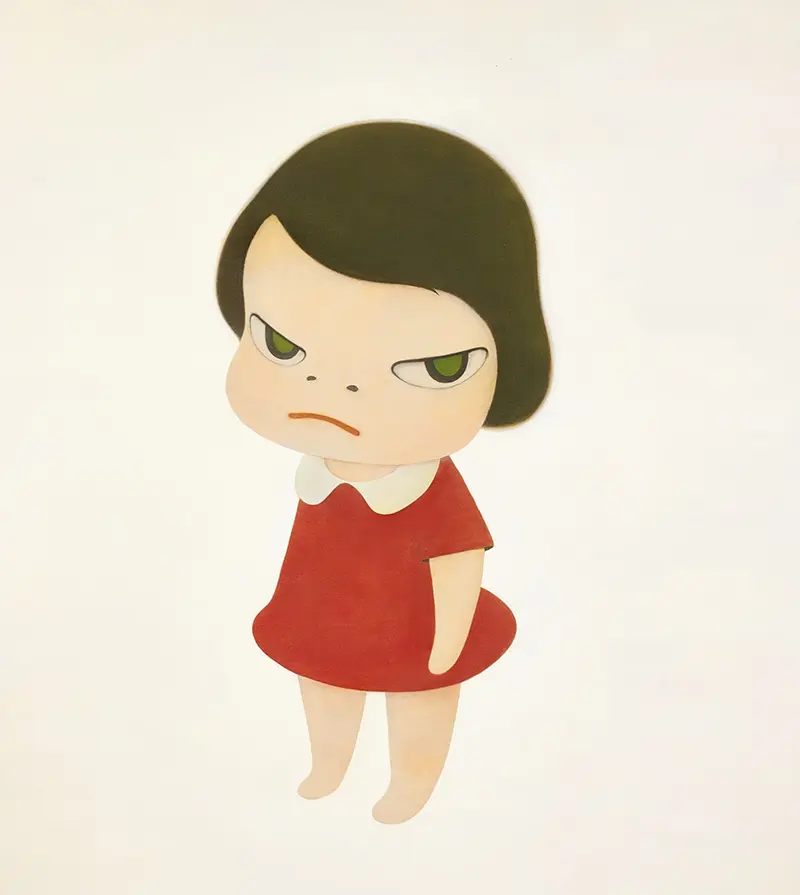
A Closer Look: Knife Behind Back (2000)
Arguably his most renowned piece, “Knife Behind Back,” features a young girl with one arm concealed behind her back, alluding to the title’s suggestion of a hidden knife.
This deliberate absence of weaponry serves a dual purpose, epitomizing his ability to convey profound allegories through the innocence of children in a corrupted world and the subversive potential of a child’s imagination.
The eyes are seemingly the windows to the soul for Nara. Besides the use of large canvases, pastel hues, and masterful brushworks creating an alluring visual aura, the piercing look on the subject communicates the figure’s true intentions.
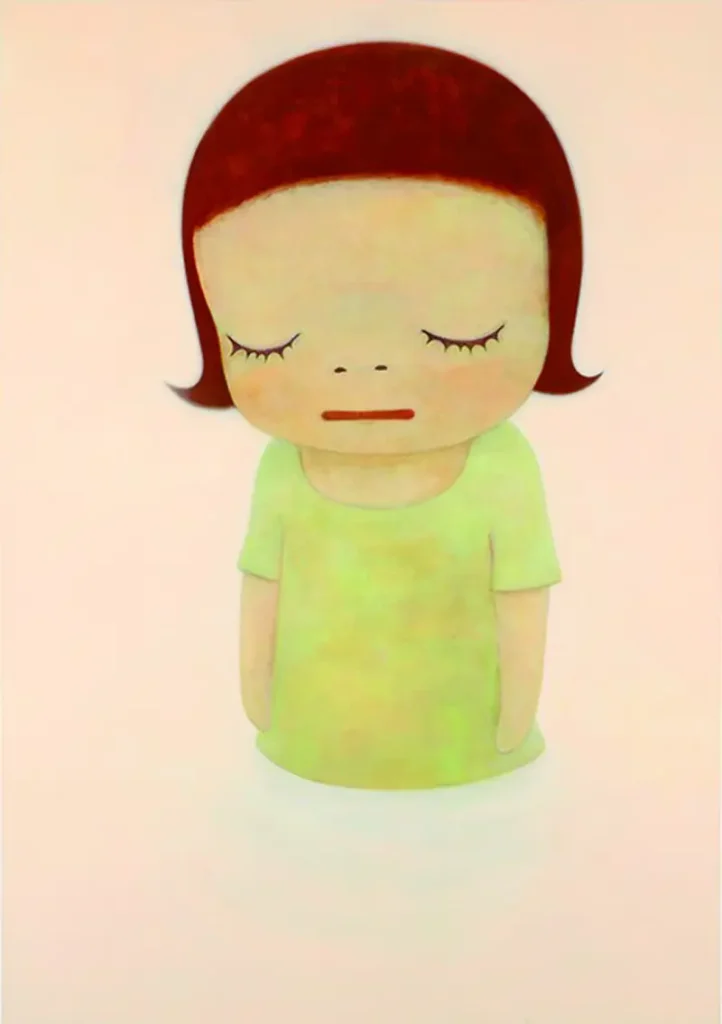
Shift in Style
A change in Nara’s practice towards themes of fragility, temporality, and beauty can be seen in works such as “Milky Lake” (2011). Nara’s mature works became increasingly existential in nature, drawing comparisons to transcendental artists like Mark Rothko. These themes were influenced by personal experiences such as the 2011 earthquake and ensuing tsunami, coupled with the death of his father.
In “Milky Lake”, a calm main character with orange hair stands in a milky lake with her arms behind her back, evoking tranquility and luring spectators into a watery horizon that stretches outside the boundaries of the canvas.
Nara was motivated to produce more introspective and even protest-focused works due to the earthquake’s scars on the area. Paying homage to Fukushima and current demonstrations, a few of his most recent paintings include girls holding peace banners and anti-war slogans.
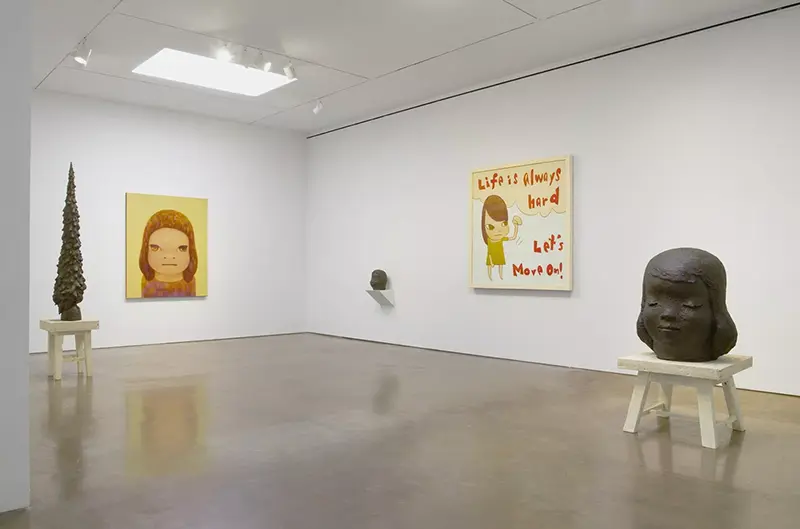
Ongoing Projects
Yoshitomo Nara’s artistic journey continues with his ongoing projects. Through February 25, 2024, The Aomori Museum of Art in Japan is presenting a thorough retrospective of Nara’s works. Pace Gallery is showcasing Nara’s vast collection of bootleg drawings, covering a broad time period, which is on view in Geneva, Switzerland through February 29, 2024. Nara also collaborates with fellow artists at the Tomakomai City Museum in Hokkaido, Japan through March 24, 2024, where he is collaborating with an artist collective.
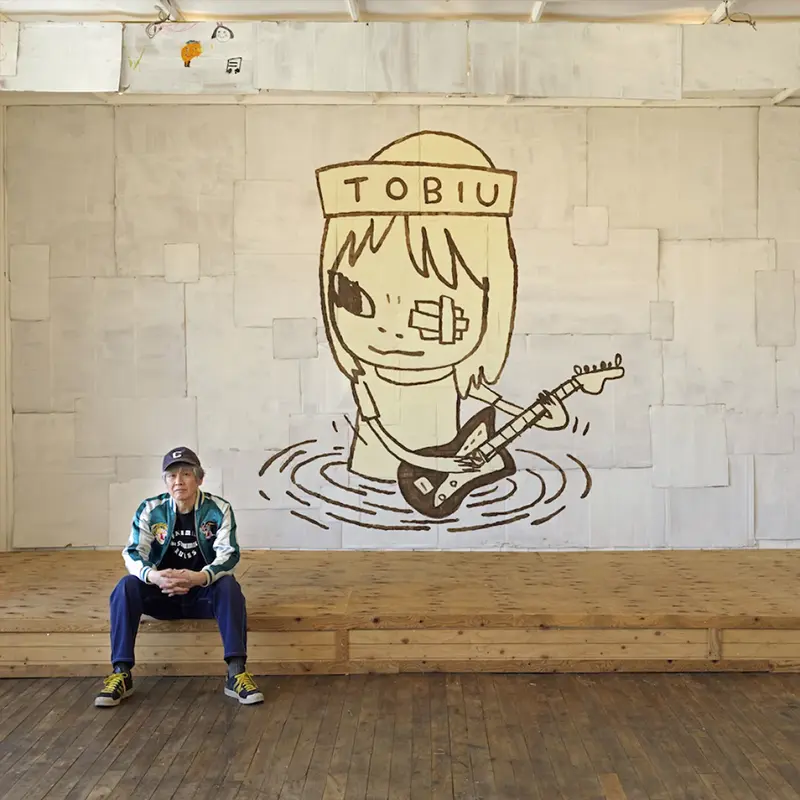
The Nara Appeal
There is an undeniable Nara appeal, with his art attracting a diverse set of audiences from art collectors to the rebellious youth.
Such an appeal is achieved because Nara’s work speaks to the viewer on a personal level. The viewers resonate with his figures and see a piece of themselves in them. These feelings of such relatability became global, stemming from his ability to portray a universal feeling. By touching on dark topics like dread, hatred, loneliness, and powerlessness in society, Nara has become a well-known and influential figure in the contemporary art scene.
Maintaining a low profile, Nara continues to work on various mediums, emphasizing the importance of his artistic pursuits over external validation or recognition. He continues to offer a wide range by taking up on various international projects, leaving the audience with a lingering question: What’s next for Yoshitomo Nara?
